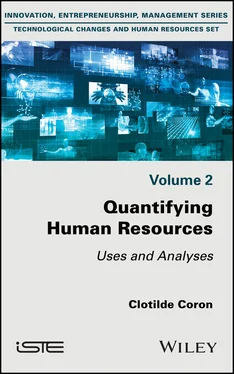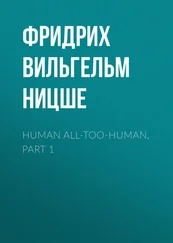1 Cover
2 Acknowledgments Acknowledgments I would like to warmly thank all the people working at IAE Paris, the administrative staff and the teachers–researchers, for the stimulating working atmosphere and exchanges. In particular, I would like to thank Patrick Gilbert for his trust, support and wise advice. My gratitude also goes to Pascal Braun for his attentive review and enriching remarks. Finally, I would like to thank the team at ISTE, without whom this book would not have been possible.
3 Introduction Introduction This book arises from an initial observation: quantification has gradually invaded all modern Western societies, and organizations and companies are not exempt from this trend. As a result, the human resources (HR) function is increasingly using quantification tools. However, quantification raises specific questions when it concerns human beings. Consequently, HR quantification gives rise to a variety of approaches, in particular: an approach that values the use of quantification as a guarantee of objectivity, of scientific rigor and, ultimately, of the improvement of the HR function; and a more critical approach that highlights the social foundations of the practice of quantification and thus challenges the myth of totally neutral or objective quantification. These two main approaches make it possible to clarify the aim of this book, which seeks to take advantage of their respective contributions to maintain a broad vision of the challenges of HR quantification.
4 1 From the Statisticalization of Labor to Human Resources Algorithms: The Different Uses of Quantification
1.1. Quantifying reality: quantifying individuals or positions
1.2. From reporting to HR data analysis
1.3. Big Data and the use of HR algorithms
5 2 Quantification and Decision-making
2.1. In search of objectivity
2.2. In search of personalization
2.3. In search of predictability
6 3 How are Quantified HR Management Tools Appropriated by Different Agents?
3.1. The different avatars of the link between managerial rationalization and quantification
3.2. Distrust of data collection and processing
3.3. Distrust of a disembodied decision
7 4 What Effects are the Effects of Quantification on the Human Resources Function?
4.1. Quantification for HR policy evaluation?
4.2. Quantifying in order to legitimize the HR function?
4.3. The quantification and risk of HR business automation
8 5 The Ethical Issues of Quantification
5.1. Protection of personal data
5.2. Quantification and discrimination(s)
5.3. Opening the “black box” of quantification
9 Conclusion
10 References
11 Index
12 End User License Agreement
1 Chapter 1 Table 1.1. The characteristics of HR commensuration
2 Chapter 2Table 2.1. The influences of the myth of objective quantification on perceived j...
3 Chapter 4Table 4.1. The appropriation of monitoring indicators
4 ConclusionTable C.1. The functional, structural and procedural dimensions of quantificatio...
1 Chapter 4Figure 4.1. From selective policy appropriation to selective management tool app...Figure 4.2. The staircase model (sources: Le Louarn 2008; Cossette et al. 2014)
2 ConclusionFigure C.1. Summary of the workFigure C.2. Theoretical framework for analyzing HR quantification
1 Cover
2 Table of Contents
3 Begin Reading
1 v
2 iii
3 iv
4 ix
5 xi
6 xii
7 xiii
8 xiv
9 xv
10 xvi
11 xvii
12 xviii
13 xix
14 xx
15 xxi
16 xxii
17 xxiii
18 1
19 2
20 3
21 4
22 5
23 6
24 7
25 8
26 9
27 10
28 11
29 12
30 13
31 14
32 15
33 16
34 17
35 18
36 19
37 20
38 21
39 22
40 23
41 24
42 25
43 26
44 27
45 28
46 29
47 30
48 31
49 32
50 33
51 34
52 35
53 36
54 37
55 38
56 39
57 40
58 41
59 42
60 43
61 45
62 46
63 47
64 48
65 49
66 50
67 51
68 52
69 53
70 54
71 55
72 56
73 57
74 58
75 59
76 60
77 61
78 62
79 63
80 64
81 65
82 66
83 67
84 68
85 69
86 70
87 71
88 72
89 73
90 74
91 75
92 76
93 77
94 78
95 79
96 80
97 81
98 82
99 83
100 84
101 85
102 87
103 88
104 89
105 90
106 91
107 92
108 93
109 94
110 95
111 96
112 97
113 98
114 99
115 100
116 101
117 102
118 103
119 104
120 105
121 106
122 107
123 108
124 109
125 110
126 111
127 112
128 113
129 114
130 115
131 116
132 117
133 118
134 119
135 120
136 121
137 122
138 123
139 124
140 125
141 126
142 127
143 128
144 129
145 130
146 131
147 132
148 133
149 134
150 135
151 136
152 137
153 138
154 139
155 140
156 141
157 142
158 143
159 144
160 145
161 146
162 147
163 148
164 149
165 150
166 151
167 152
168 153
169 154
170 155
171 156
172 157
173 158
174 159
175 160
176 161
177 162
178 163
179 164
180 165
181 166
182 167
183 168
184 169
185 170
186 171
187 172
188 173
189 174
190 175
191 176
192 177
193 178
194 179
195 180
196 181
197 182
198 183
199 184
200 185
201 186
202 187
203 188
204 189
205 190
206 191
207 192
208 193
209 194
210 195
211 196
212 197
213 198
214 199
215 201
216 202
217 203
218 204
219 205
220 206
221 207
222 208
223 209
224 210
225 211
226 212
227 213
228 214
229 215
Technological Changes and Human Resources Set
coordinated by
Patrick Gilbert
Volume 2
Quantifying Human Resources
Uses and Analyses
Clotilde Coron

First published 2020 in Great Britain and the United States by ISTE Ltd and John Wiley & Sons, Inc.
Apart from any fair dealing for the purposes of research or private study, or criticism or review, as permitted under the Copyright, Designs and Patents Act 1988, this publication may only be reproduced, stored or transmitted, in any form or by any means, with the prior permission in writing of the publishers, or in the case of reprographic reproduction in accordance with the terms and licenses issued by the CLA. Enquiries concerning reproduction outside these terms should be sent to the publishers at the undermentioned address:
ISTE Ltd
27-37 St George’s Road
London SW19 4EU
Читать дальше













